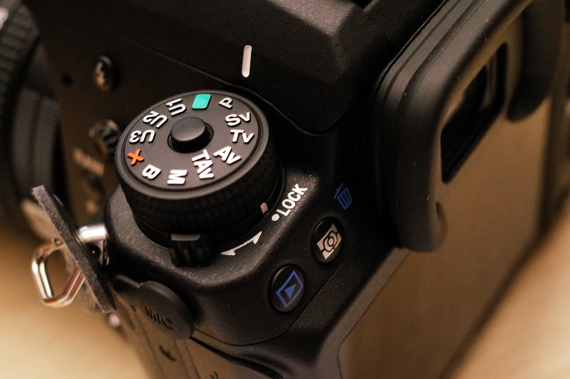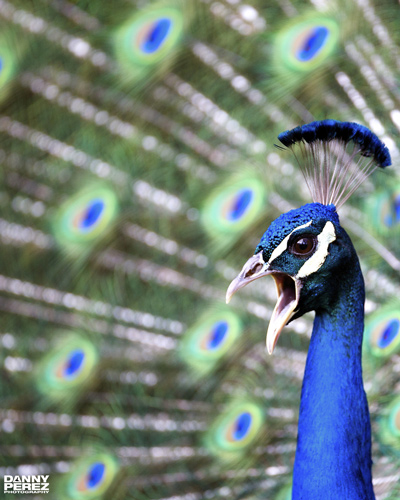If you’re just learning about your camera, then chances are you’ve taken a look at the top of your camera only to become immediately confused. However, you don’t need to worry, as I’m going to explain what each and every one of these camera modes does.
Automatic ([ ])
The automatic mode really doesn’t need much of an introduction; you can probably guess by the name what it does. Automatic allows your camera to set all of your camera options “automatically” to produce the exposure that it thinks is correct.
Automatic mode doesn’t allow you to set the shutter speed, aperture, ISO, or sometimes even the flash, which often pops up and ruins your photos. If you don’t know how to use your camera and are considering shooting in this mode, don’t stay here for too long or you won’t learn what your camera is really capable of.
Program Mode (P)
Program mode is a mode for beginners to start to understand their cameras. Program mode is similar to automatic in the way that it allows the camera to make the decision on which settings to use to correct the exposure. Once the settings are selected, you can easily change them. For example, if the camera thinks that the correct shutter speed would be 1/200 of a second but you think this is too slow, you can change it so it gives you a shutter speed of, say, 1/400.
If you don’t know much about cameras, I would recommend using this mode to start off with.
Aperture Priority (Av)
Aperture priority is a mode in which you set the aperture while the shutter speed is automatically set for you to give the correct exposure. This mode is useful when you want to achieve a certain depth of field. For example, if you wanted a shallow depth of field (not much in focus) then you could set the aperture to your lens’s lowest number (e.g. f/1.8), and if you wanted a wide depth of field you could set it to its highest aperture value (e.g. f/22).
Shutter Priority (Tv)
Shutter priority is similar to aperture priority. This time, however, you only set the shutter speed, and the rest is done for you. This mode is useful when you want to tell the camera that you only want to shoot photos at a certain speed and not any lower or higher.
Manual (M)
While in manual mode, you are able to change all of the settings as you see fit. Aperture, ISO, shutter speed, and white balance settings can all be changed independently to create the image you’re looking for.
Learning to shoot in manual mode will help you understand photography in greater detail.
Give each of these modes a try and see how they work for you.
About the Author:
Ricky Davies is a freelance photographer.
Like This Article?
Don't Miss The Next One!
Join over 100,000 photographers of all experience levels who receive our free photography tips and articles to stay current:









I learned photography on a Nikon FM-1 which was only manual and took 35 mm film. When I purchased a B-day present of a Canon T6 Rebel I was as lost like I was starting all over again!! Will try to adapt to the Canon, but boy do I need help! Back to studying the owner’s manual. Thank you for your help as I sure need it!
“Program mode is a mode for beginners to start to understand their cameras”
This is plain bullshit. If you know your camera is it a valid setting especially when you have no time to play around in M(acho) mode.
Yes, A mode and S mode are also valid, but sometimes you do not want/need to have a special setting.
I shoot a lot in P mode and all my pictures have good exposure. You can play a lot in P mode.
P mode (up and down dial) and exposure compensation will do whatever I want, without losing the picture because “professionals” only shoot in M.
Why not use the exposure meter in your camera? It’s better than the external ones. And you need some kind of exposure meter…….
I agree with many of the comments above. The article is rather shallow and not inclusive of the other modes shown on the dial in the photo. Greg is also correct — if you understand your camera you will use whatever mode is best for the situation and you will NOT stick to only manual. And if all you are going to do is manually set the camera to what the meter suggests, why not let the camera set it for you in less time and you will get, rather than miss, your shot. Manual is great if you have the time to set it, or if your shooting conditions are very similar over a series of shots where you don’t want changes in exposure.
I absolutely disagree with the author’s comments on AUTO mode. If you DON’T know how to use your camera then you are clearly not a pro, so then ABSOLUTELY go to full automatic and you will probably get a better result than if you fiddle the settings without knowing what you/they are doing. And contrary to what he says, most better cameras DO allow control of flash in AUTO.
In my opinion (and that’s all it is — an opinion) Aperture Priority and Shutter Priority are better options than Program Mode if you want to start gaining control over you camera because Program Mode is just a dumbed down version of AUTO. There are few times when P-Mode gives a better result than AUTO; I use it mostly when I want a bit more control of my on-camera flash. In my work (travel photography) I mostly use Aperture Priority, and I switch to AUTO when I simply want to be sure of quickly getting a photo that gives me information (a sign or plaque) or that will be a reminder of something I need to remember but will not necessarily be a published photo. In those situations ISO usually skyrockets, but at least I get the shot without having to do anything.
For non-pro photographers, AUTO will ALMOST ALWAYS get them a photo that they can be happy with. They will also feel that their investment in a camera with lots of bells and whistles was worth it.
The photo shows eight (8) modes, not counting the U1 through U3, but the article touches on only Automatic [presumably the green bar], Program, Aperture priority, Shutter priority, and Manual. It doesn’t mention S, TAv, B, or X. Shouldn’t there have been just a very slight comment on each, even if the author wasn’t pushing any of them?
This article is clearly designed for beginners to give them more perspective on the camera’s built in systems and options beginners can learn and experiment at a steady basic pace developing skills along the way.
This article appears very bias to me. The author glorifies Manual mode as the only one to control ISO and WB when it fact Automatic mode is the only mode that does not let you control these features. In addition he mentions Program mode is only for beginners where in reality you can control ISO, WB, Shutter and Aperture, just not independently like manual. The only difference with fully manual mode is that you do not let the camera’s metering system control anything, but then again on all the other modes except Automatic, you can use the Exposure Compensation button to make the changes you may need. Today’s dslr’s have such sophisticated metering systems that, for most people, most of the time, they would not need to set their settings different than the meter on Program, Shutter and Aperture modes.
I have no problem with someone saying they prefer one mode over another for the type of photography they take and to explain why, but to imply only the mode they use is the best and not accurately reflect the advantages and disadvantages of all the modes is a disservice to your readers.